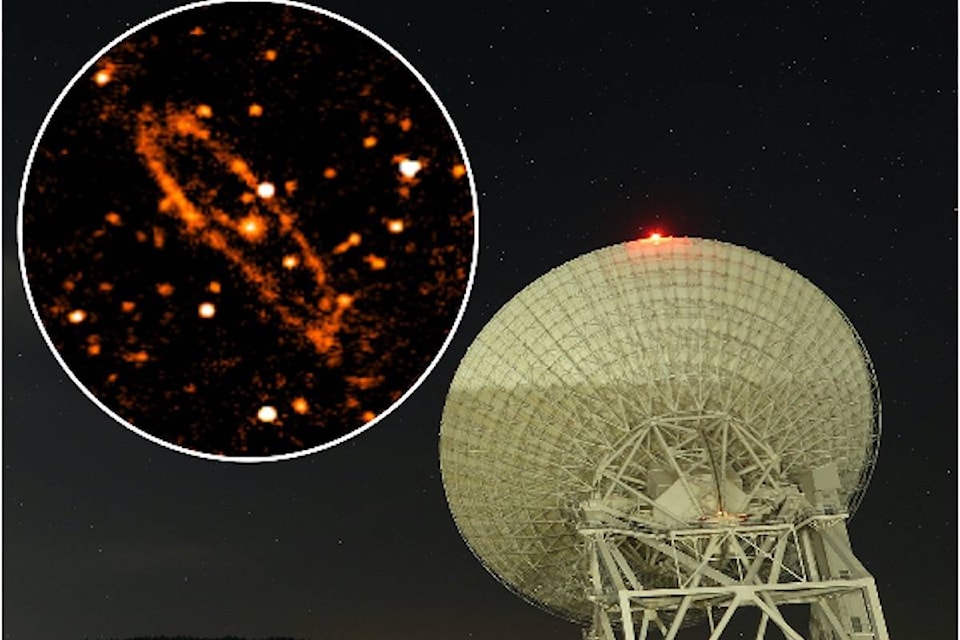B.C. scientists have published a new, detailed radio image of the the Milky Way’s sister galaxy, which will allow them to identify and study more regions where new stars are born.
The study – which is the first to create a radio image of the Andromeda Galaxy at the microwave frequency of 6.6 GHz – was led by University of British Columbia physicist Sofia Fatigoni, with colleagues at Sapienza University of Rome and the Italian National Institute of Astrophysics.
Prior to this study, no maps capturing such a large region of the sky around the Andromeda Galaxy had ever been made in the microwave band frequencies between one GHz to 22 GHz, which makes the galaxy’s emission look very faint, making it hard to see its structure.
In order to observe Andromeda at this frequency, the researchers required a single-dish radio telescope with a large effective area. For the study, the scientists turned to the Sardinia Radio Telescope, a 64-metre fully steerable telescope capable of operating at high radio frequencies.
“This image will allow us to study the structure of Andromeda and its content in more detail than has ever been possible,” said Fatigoni.
“Understanding the nature of physical processes that take place inside Andromeda allows us to understand what happens in our own galaxy more clearly – as if we were looking at ourselves from the outside.”
The full findings were published online in Astronomy and Astrophysics.
@ashwadhwani
ashley.wadhwani@bpdigital.ca
Like us on Facebook and follow us on Twitter.
Want to support local journalism? Make a donation here.



